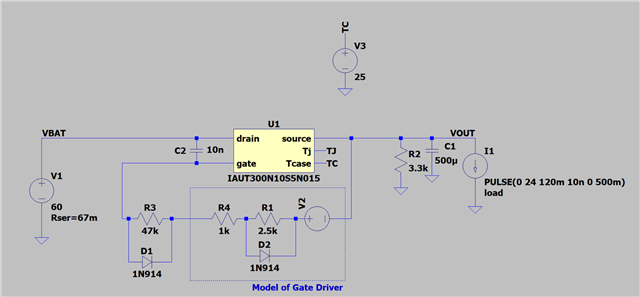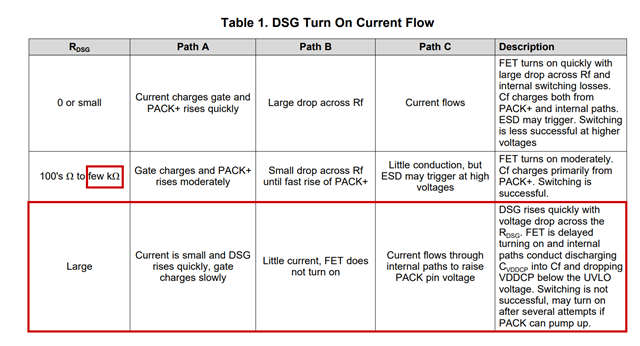Other Parts Discussed in Thread: BQ78350, , BQ76940, BQ34Z100-R2
Hi there,
We are designing a battery pack using BQ78350 + BQ76940 + BQ76200.
The output of the battery is connected to a motor controller, with bulk capacitance of 500uF.
Originally, I planned to use a power resistor with the pre discharge function of the BQ78350.
However, we need the caps to be charged in < 100ms.
I calculated the required resistor to charge in < 100ms, and landed on 32 ohm.
Our battery is max 60V.
The resistor power would be 112.5W peak and the charge would last for 100ms.
A few problems I see with this approach- the resistor with this pulse power rating large. The second is in the event of a short circuit, I see the min time to enable pre discharge for on the BQ78350 R2 is 1 sec. This means that the pre discharge will turn on into a short and burn this power (> 100W) for 1 second.
I had an idea for an alternate approach- adding a capacitor to the gate of the discharge FET.
I modeled the BQ76200 gate drive as a voltage source of 12V with 3.5k series resistor (ON) and 1.5k series resistor (OFF) from gate to source.

I was checking the junction temperature of the FET in SPICE and it does not appear to get too hot with this approach.
Wanted to ask
a. Do you see any potential problems with this approach
b. Could you provide the min and max ON and OFF gate driver resistance of the BQ76200 if you have it, and given this is an accurate way to model the gate driver
Thanks!


